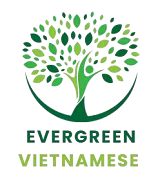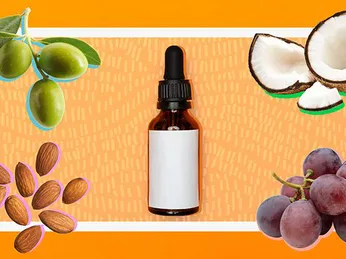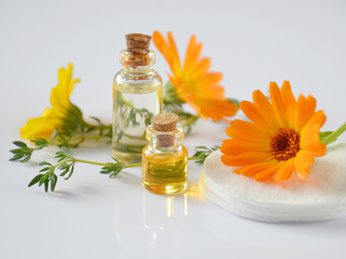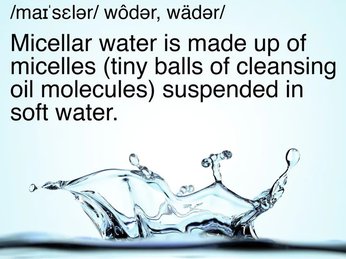What Are ‘Natural’ Skin-Care Products
A global shift towards adopting a healthy lifestyle, growing concerns about animal cruelty and environmental sustainability, growth of the online retail market as well as new product innovation & developments, are driving the natural skincare products market.
Find out what ‘natural’ and ‘nontoxic’ really mean, whether certain chemicals pose a health threat, and how to be a smart shopper.
The rising awareness about the use of harmful chemicals in skin care products and its adverse impact on the skin health of the user has shifted consumer preference towards natural skincare products. Natural skincare products are delicate and regular use of such products produces long-term benefits for the consumer.
Natural skincare products are derived from nature, flowers, herbs, roots, leaves, etc., these products are processed without the use of any chemical preservative and emulsifiers. This organic processing helps maintain the integrity of the ingredients so that maximum benefits can be derived from the products. Natural skincare products are delicate, have minimal to no side effects & provide long-term benefits to the consumer.
The products do not cause redness, irritation, discomfort, unlike chemical-based skincare products. However, the supply of natural ingredients is irregular as the production of such natural & organic ingredients is vulnerable to climate change. In addition, maintaining the integrity of the ingredients during the course of processing & packaging increases input costs, which is translated into its selling price. The rise in false claims is likely to pose a challenge for the market players. Certain brands label products as natural, organic, chemical-free without any certification, such misleading information creates distrust among the consumers and negatively impacts the market.
Problem is, the term “natural” is pretty vague. “There’s no formal system that regulates ‘natural’ or a legal definition of what this term means,” says Marisa Garshick, MD, a board-certified dermatologist and an assistant clinical professor of dermatology at Weill Cornell Medicine and NewYork-Presbyterian Medical Center in New York City. “This gets complicated for consumers, as companies can make a claim that a product is natural even though it contains ingredients that don’t constitute as natural,” she says.
What You’re Really Getting When You Opt for ‘Natural’ Skin Care
Often, the terms “nontoxic” or “natural” suggest that the product is free of synthetic chemicals that may be linked to health problems or that many people get irritated by (or both), says Jennifer Chwalek, MD, a board-certified dermatologist at Union Square Laser Dermatology in New York City. These chemicals may include fragrance, dyes, and certain preservatives, such as parabens, she says. But that’s more of a consumer perception than a promise.
"Natural" or "organic" doesn’t ensure the product is healthier, safer, or better for your skin. “These terms don’t mean hypoallergenic,” for instance, says the dermatologist Rebecca Kazin, MD, an assistant professor in the department of dermatology at Johns Hopkins Medicine in Baltimore. (The “hypoallergenic” label suggests the product is less likely to cause an allergic reaction, according to the U.S. Food and Drug Administration [FDA].) What’s more, if you have a sensitive complexion, natural products won’t automatically fix your skin woes. “If a patient is having a problem with their skin, I may suggest they try a product where I know exactly what the ingredients are, that they should not have a reaction to,” Dr. Kazin says.
But Do Skin-Care Ingredients Actually Get Under Your Skin?
Another important question is whether ingredients in skin-care products, “natural” or not, are getting into your body. “Many of these molecules [in skin-care ingredients] are too large to penetrate skin. But science has gotten smarter and is figuring out ways to trick skin to allow more in to improve efficacy,” says Kazin. One upside is that this may ultimately allow for a smaller concentration of an active ingredient.
On the flip side, proponents of clean beauty say that particles entering the skin can cause some systemic harm. While the FDA says that some of these ingredients of concern, including phthalates and parabens, are safe as used, research points to these as potential endocrine disruptors, or chemicals that affect your hormones and may increase your risk of cancer or fertility problems, according to the Environmental Working Group (EWG). It’s common to hear people talk about how these ingredients are illegal to use in Europe. In fact, the European Union has banned the use of five parabens, though it does allow small amounts of certain parabens. Regulators in the United States currently allow 20 parabens or paraben-like chemicals.
Other Questions About Ingredients in Skin-Care Products
While there may be legitimate reasons for concern, there are many unknowns about chemicals used in skin-care ingredients. “The question becomes at what concentration or exposure level do these chemicals become an issue?” says Chwalek. Many of these studies have been conducted on rodents that are exposed to a far greater concentration than normal, so more research is needed, says Garshick. There’s also the issue that these ingredients are used in various other products (including food), so there’s the question about how these fit into the larger picture of total exposure — and exactly what that means.
Unfortunately, we don’t have all the answers yet. In the meantime, you can choose the skin-care products that align with your values, your skin-care goals, and your budget. Naturally derived ingredients can be efficacious, our dermatologists say, and natural or organic products can also be expensive. If they don't fit in your budget, you can work with your dermatologist to find alternatives that will work for your skin.
‘Natural’ Skin-Care Glossary: Terms and Definitions
5-free You may find this, and similar terms such as 7-free, 10-free, and 15-free, on nail polish labels in brands that claim to be nontoxic. These numbers refer to the number of chemicals that a nail polish does not include. For example, if a nail polish is “5-free,” it does not contain formaldehyde, toluene, dibutyl phthalate, formaldehyde resin, and camphor, though debate continues over whether these "-free" products are safer for the consumer, according to Harvard Medical School.
Organic Contrary to what you might think, the FDA doesn’t regulate the “organic” label on cosmetics or skin care. But if the formula is made from agricultural ingredients, it can be certified organic in accordance with the United States Department of Agriculture (USDA) National Organic Program (NOP). For a product to carry the USDA Organic Seal, it must be made of at least 95 percent organic ingredients. If something is labeled “made with organic ingredients,” that means it contains at least 70 percent organic ingredients, but it can’t use the seal.
Paraben-free Parabens are preservatives, used to prevent nasties like bacteria and mold from proliferating in your products, says the FDA. You’ll see these listed as methylparaben, propylparaben, butylparaben, and ethylparaben. The FDA says that though research is ongoing, “at this time, we do not have information showing that parabens as they are used in cosmetics have an effect on human health.” A product labeled paraben-free will contain no parabens.
PFAS-free This stands for per- and polyfluoroalkyl substances (PFAs), according to the FDA. These chemicals are added to some lotions, cleansers, nail polish, shaving creams, and makeup in order to smooth skin, add shine, or improve product texture. Some data has suggested that PFAS do not present a harm to people in the amounts in cosmetics; however, the data is limited and additional information is needed to truly assess their safety, says the FDA.
Phthalate-free Phthalates are chemicals found in a variety of household items, including personal-care products such as soap and shampoo, according to the FDA. One called diethylphthalate (DEP) is commonly used in fragrance ingredients. The FDA has not found that these ingredients are a danger to health. But if you wish to avoid them, phthalate-free labels on products indicate that no phthalates have been used.
Sulfate-free Sulfates, like sodium lauryl sulfate, are essentially soaps. But the clinical term for them is “surfactants”; they help ingredients like oils and water mix together, according to Cosmeticsinfo.org. As a result, they may be in shampoos and other bath products. If there is "sulfate-free" lingo on the label, the product does not contain sulfates.
Toxin-free or nontoxic According to the EWG, companies use this term to “suggest that a product is safe.” Yet the term is unregulated and, as they note, even water in large amounts can be toxic. Point being: It’s a marketing claim only and doesn’t guarantee safety.
How to Make the Switch Toward ‘Clean Beauty’
If you’re interested in the natural-beauty movement, it’s going to take some research on your part. “The challenge is reading between the lines on labels and knowing exactly what you’re putting on your skin,” says Garshick. Here’s how to begin.
Talk to your dermatologist. Throw all the products you’re using in a bag and bring them in to your next appointment with your dermatologist. He or she will do a read of the ingredients and let you know if something may be causing a reaction in your skin, or if there’s a way to streamline your routine. It’s a good idea to do this no matter what types of products you’re using.
Start slowly. If you switch everything at once and have a reaction, you won’t know what caused it. Introduce one new product per week, max, recommends Garshick.
Be patient with the results. If you previously used conventional skin-care products and are now making the switch to natural, it may take longer to see a change in your skin, says Garshick. That doesn’t mean the product isn’t effective, but this waiting period is something to be mindful of, she says.
Look for targeted ingredients. Willow bark extract is a derivative of salicylic acid, and it can help with breakouts, says Garshick. Likewise, if you’re looking to reverse or slow signs of skin aging, antioxidants (like those found in vitamin C or vitamin E, or extracted from various plants) can help prevent the DNA damage that degrades collagen (which ultimately leads to wrinkles and discoloration). Newer on the scene is bakuchiol: “This is the best thing we’ve found as an alternative to retinol/retinoid,” she says. Retinoids have long been considered the gold-standard in anti-aging, as they stimulate collagen production to smooth fine lines, per the American Academy of Dermatology Association.
Try clean beauty brands. Some companies and products that are focusing on natural ingredients that Garshick personally likes include Drunk Elephant C-Firma Fresh Day Serum ($78, Sephora.com); Good Science Beauty Hydrating Face Cream ($78, GoodScienceBeauty.com); and the Ordinary’s line of products, which includes cleansers, peptides, and retinoids (from $4.20, TheOrdinary.com). Chwalek adds Eminence Organics, True Botanicals, Biossance, and Pratima to that list.
Do your research. The Environmental Working Group’s Skin Deep Database is a good resource for understanding what’s in your products, says Chwalek. In May 2020, the EWG also authored a report on the “toxic 12 chemicals and contaminants in cosmetics.” The good news is that many of these chemicals are rarely used in cosmetics today, or are being banned or restricted by popular retailers, they note. Their chart can come in handy when you’re researching ingredients and deciding if there are chemicals you’d like to avoid.
Cre: Everyday Health - What are Natural skin care products and are they actually better for you, by Jessica Migala Medically Reviewed by Ross Radusky, MD
The Brainy Insights research - Natural skin care products forcast to 2023










